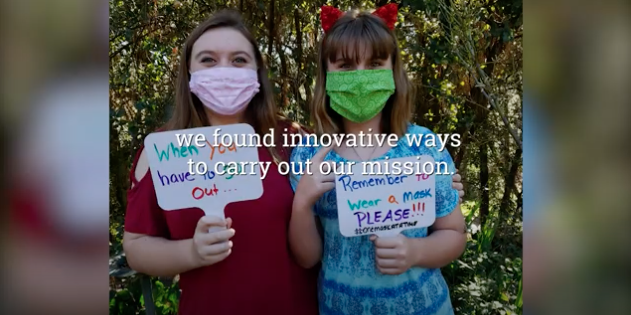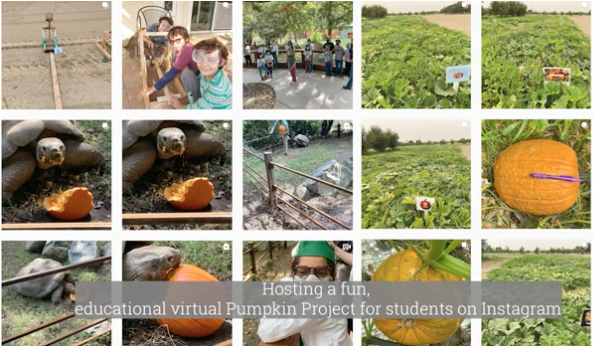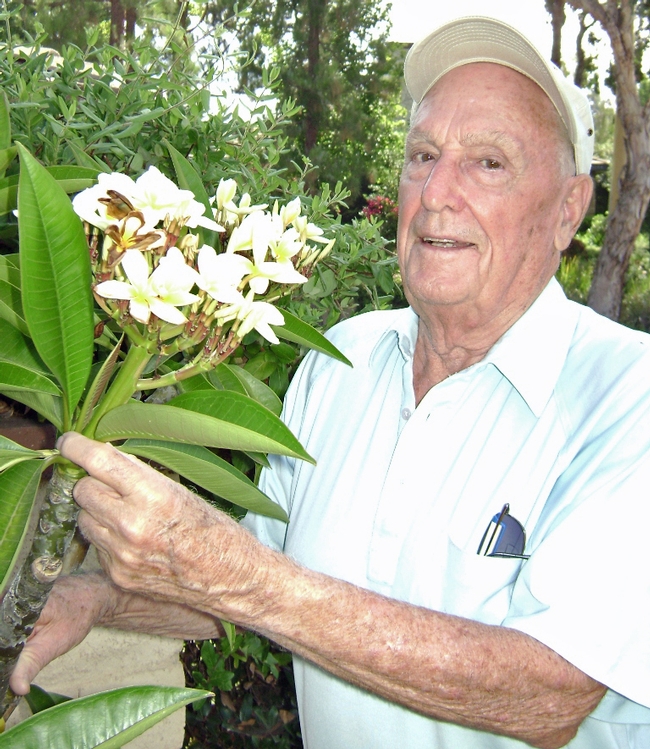- Author: Patrick McGuire
- Author: Paul Gepts
- Author: Calvin Qualset

Gallagher was born in San Francisco and raised in Marin County. He earned a B.A. in political science at UC Davis with his sights set on a law career. After graduation, he joined the Peace Corps and taught primary school for two years on the slopes of Mt. Kilimanjaro, Tanzania, before joining an agricultural project on the shores of Lake Turkana in Kenya.
The Kenya experience compelled Gallagher to refocus his goals on agriculture. When he returned to California, he earned a doctorate in plant genetics from UC Davis.
His first job after completing his Ph.D. was in Debre Zeit, Ethiopia. Then he joined the University of Minnesota as an assistant professor, working with their agricultural program in Morocco. He also taught plant breeding, in French, at IAV Hassan II University. Altogether, he spent eight years in Morocco teaching, breeding barley and developing an agriculture faculty there for the University of Minnesota.
The last 30 years of Gallagher's professional life were spent at UC Davis as its barley breeder. He made sure that genetic materials were shared with active breeders and that advanced materials were actively evaluated to ensure release of outstanding varieties from UC's public breeding program. He pioneered a form of participatory plant breeding that engaged growers and seed distributors to conduct on-farm field evaluations of his advanced breeding lines. Northern California Barley Growers was established to enhance the evaluation, release, and distribution of new varieties. These representatives were invited to make evaluations and selections for their own tests under UC Agricultural Experiment Station Test Agreements. This resulted in the UC releases of great many barley varieties for feed, food, forage and malting.
He had the distinction of enabling two industries in California. The first was the food industry with his development of a naked barley (free threshing). ‘Tamalpais' now appears on some restaurant menus. He resurrected the malting barley industry in California with the development and release of Butta 12, a two-rowed malting barley for the burgeoning craft brewing industry, receiving acclaim from Admiral Maltings, the Alameda-based malting company that is marketing ‘Gallagher's Best' and ‘Feldblum' malts from the Butta 12 variety. The variety has been enthusiastically received by California growers and artisan brewers, with some 280 of them brewing cumulatively over 1,000 different beers using these malts.
Gallagher recently discussed the success of Butta 12 with Ron Silberstein, co-founder and managing member of Admiral Maltings, in a podcast organized by the Crop Science Society of America.
On Lynn's passing, Silberstein noted, “Lynn has been such a mentor and inspiring resource. He has been absolutely critical to the stage of life I am in now with Admiral Maltings. There is no way I'd be doing what I'm doing without his enthusiastic help.”
Admiral Maltings, the first malting facility in California in decades, was a major final piece of the network that Gallagher helped cultivate: California-adapted malting barleys, California growers, California malt, and California brewers and distillers.
Several condolences and plaudits shared among researchers testify to Gallagher's impact on barley breeding and the careers of barley researchers. Comments have come from members of the American Malting Barley Association (AMBA) network, from scientists at the international research center in Morocco (ICARDA), from Moroccan barley breeders, many of whom were Gallagher's students in Morocco and later collaborated with him while he worked at UC Davis.
“Lynn has been an excellent contributor to ICARDA's global barley breeding program. I particularly remember him for supplying crosses with Yd2 and Yd3 combinations, which were later advanced and verified for effectiveness of BYDV resistance at Tunisia by the ICARDA team (Saafa and others),” wrote Ramesh Verma, principal barley investigator for ICAR- Indian Institute of Wheat & Barley Research in Karnal, India, and former ICARDA barley breeder in Morocco. “Secondly, he was a regular supplier of high variability germplasm/segregating lines for drought to be evaluated and shared internationally by ICARDA. I wish to put on record my sincere gratitude for his immense contributions.”
Gallagher retired at the end of 2017.
Mike Davis, president of AMBA, wrote, “I was impressed that with limited funding from various sources, including AMBA, he was able to run an effective and productive barley genetics and breeding program. “His skills as a geneticist and his dedicated and tireless efforts led to basic research, germplasm, and variety outputs of value and impact to the barley community throughout the U.S. and world.”
Gallagher is survived by his wife, Judy Smith; his brother Bill and sister-in-law Liz Gallagher of Santa Rosa; as well as two nieces and their families.
UC ANR Strategic Communications' Linda Forbes and Ricardo Vela made a video highlighting many of UCANR's 2020 accomplishments. The video is posted on YouTube at https://youtu.be/9puxX_HAC1s and the script is below. Wishing you an even more successful 2021!
2020 was a difficult and often devastating year, making our work to improve the lives of Californians all the more important. When the pandemic hit, we found innovative ways to carry out our mission.
Training people online across the spectrum of agricultural and environmental topics
Creating numerous virtual resources, from home gardening information to a new “Water and COVID-19” web page
Conducting virtual farm visits and field days
Providing critical safety information to underserved and non-English-speaking populations
Partnering with local organizations to address food insecurity
Training Californians in activities that support wellness
- Gardening
- Cooking
- Home food preservation and safety
- Physical activity and mindfulness
- Nutrition
- Organic farming
- Raising chickens
Offering private, educational and safe family tours at Elkus Ranch
Holding a COVID-safe California Naturalist intensive training for California Conservation Corps at Hopland REC
Engaging 4-H youth online – Facebook Live chick-hatching, a Disease Detectives program, virtual coding lessons, cooking demonstrations and much more
Providing more than 34,000 hours of virtual integrated pest management training
Creating an agritourism directory to connect Californians with their local farms
Providing EFNEP nutrition education curricula and other resources to teachers and community organizations
Donating 70,000 pounds of squash grown at Westside REC to the Central California Food Bank
Compiling resources for farmers, community gardeners and other people working in the food system
Helping small-scale Asian and Latino farmers complete English-language disaster aid applications
Providing critical resources and guidance on adjusting school meal service and other operations to reduce student hunger
Hosting a fun, educational virtual Pumpkin Project for students on Instagram
Throughout the year, we continued our work in wildfire prevention, disaster assistance and recovery, garnering national media attention
We provided prescribed burn training and outreach, and partnered with CAL FIRE to develop a new prescribed burn association in San Benito, Monterey and Santa Cruz.
We published guidance for city planners, fire districts and communities for reducing risk when building in fire-prone areas
We developed an app to identify hazardous trees for wildfire prevention
We delivered community workshops and training to help youth and adults reduce wildfire risk
We launched Match.Graze, a tool to connect landowners with livestock owners for vegetation management
In 2020 we pursued hundreds of critical research projects, following COVID-19 safety protocols
We studied climate change adaptation, hedgerow elderberries, strawberry fumigant alternatives, smoke and ash in food production, farmers market food safety and much more
Kearney REC stayed open to continue research on over 50 crops
We're studying mating disruption to control codling moth and navel orangeworm in walnuts, thanks to a $1 million award from CDFA
We became part of a $10 million grant from USDA focusing on adopting Kernza® to promote reduced tillage and increased carbon sequestration.
Despite the many challenges, there were more things to be proud of.
We helped increase the use of mating disruption in San Joaquin Valley almond acreage. David Haviland and Jhalendra Rijal received awards for this work from the CA Department of Pesticide Regulation and International IPM Symposium
We're leading efforts to develop an advanced wood products industry in California (Image: forest)
We launched the UC Organic Agriculture Institute, with support from Clif Bar, and chose Houston Wilson to lead it
265 participants in the 4-H Juntos program learned about educational access and success
We started the Soil Health Connection YouTube channel, a partnership between Colusa County Resource Conservation District and Sutter-Yuba Cooperative Extension
We turned our UC Master Gardener plant sale in Contra Costa County into a giveaway of 30,000 plants to benefit marginalized communities, shelters and schools
We celebrated Dr. Mary Blackburn's resolution from the Alameda County Board of Supervisors for her 50 years of service to the community – over 30 of those with UC ANR
We trained CalFresh shoppers to take advantage of the Market Match program to double the value of their benefit at farmers markets
Our Climate Smart Agriculture Community Education Specialists helped growers apply for cost-share funds from CDFA's Climate Smart Agriculture programs
Our Nutrition Policy Institute partnered with CA Department of Public Health to help restaurants comply with Senate Bill No. 1192 – so that children get healthy beverages when dining out
We shared research on tree mortality and actions that can be taken to make the forest more resilient
We were grateful for the support of our donors and partners. Our Giving Tuesday campaign broke all previous campaign records!
We're excited about all the opportunities to make a difference in 2021.
- Author: Philip A. Roberts
- Author: J. Ole Becker
Seymour Dean Van Gundy, UC Riverside professor emeritus of nematology and plant pathology, passed away peacefully at home on Dec. 27, 2020.
He was born on Feb. 24, 1931, in Toledo, Ohio. Known to family, friends and colleagues as ‘Van,' he graduated from Monclova High School, Monclova, Ohio, in 1949. Van Gundy entered Bowling Green State University on an Edwin Mosley Scholarship and graduated with a B.A. in Biology in 1953. While an undergraduate, he worked part-time at the local H.J. Heinz Crop Research Department crossing tomatoes and cucumbers and screening cucumbers for cucumber scab resistance under a collaborative program with the Department of Plant Pathology at University of Wisconsin. Plant Pathologist J.C. Walker offered him an assistantship to continue his work on cucumber angular leaf spot when he graduated in 1953.
In 1956, Van Gundy finished his Ph.D. research at the University of Wisconsin and continued as a postdoctoral student until February 1957. Dewey J. Raski, chair of the University of California Statewide Nematology Department, offered him a position in the Nematology Department at UC Riverside. Two months of training with esteemed nematologist Gerald Thorne prepared Van for his new job before going to California.
He joined the UCR Department of Nematology as a junior nematologist in March 1957. At that time, the management and damage control of nematodes attacking citrus in southern and central California was of significant economic interest. In 1958, Van researched and published the first complete life history of the citrus nematode (Tylenchulus semipenetrans). Consequently, he worked for many years on the ecology and management of citrus nematode. Nearly a decade later, he discovered the sheath nematode (Hemicycliophora arenaria), a new species parasitizing desert citrus. With the campus photographer Ken Middleham, they made the first nematode film featuring the feeding and life cycle of the sheath nematode. In 1964, he was named a Fellow of the American Association for the Advancement of Science (AAAS). Van was appointed Professor of Nematology in July 1968.
During the 1965-66 academic year, Van Gundy spent a sabbatical leave in Australia working with Harry Wallace and Alan Bird to strengthen his interdisciplinary research interest in nematode ecology. In collaboration with UCR colleagues in various departments, Van continued to study resistance in citrus to the citrus nematode, the interaction of multiple nematode associations on citrus and grapevines, and the effects of soil aeration on the ecology of nematodes. He worked with Peter Tsao and Donald E. Munnecke of UCR's Department Plant Pathology on soil fungi/citrus nematode interactions and soil fumigants, respectively. From September 1968 to 1970, he served as associate dean for research in the Graduate Division at UCR.
From 1970 to 1972, Van Gundy served as assistant vice chancellor for research, and from 1972 to 1984, he was chairman of the Department of Nematology. Through his lobbying efforts, he secured state funding for the first Nematology Quarantine and Isolation facility. In 1977, in collaboration with Diana Wall, he spent a summer at the University of Alaska, Fairbanks, to study nematodes in the black spruce-permafrost ecosystem. In 1979, Van Gundy was joint appointed in the UCR Plant Pathology Department and received the title of professor of nematology and plant pathology. In 1984, he spent a sabbatical leave in Milton Schroth's laboratory in the Department of Plant Pathology at UC Berkeley studying rhizobacteria. On his return, he served in the College of Natural and Agricultural Sciences as associate dean for research from 1985 to 1988 and dean of the college from 1988 to 1993.
In the Society of Nematologists, he was instrumental in establishing the Journal of Nematology and served as its first editor-in-chief. He served as vice president and president of the Society of Nematologists and became a fellow in 1984 and honorary member in 1997. In 1978, Van Gundy was named a Fellow of the American Phytopathological Society. In 2000, he was appointed to the State Water Quality Control Board - Santa Ana Region by then California Governor Gray Davis and re-appointed in 2006 for a second term by Davis' successor Governor Arnold Schwarzenegger.
Van Gundy retired in 1993, but that did not slow him down, as he continued to work on campus under a five-year recall agreement and engaged in a range of international program activities for the college and campus. He had a voluntary but active role in the college as associate dean for International Programs. He was involved with the university's extension program, traveling to many countries to stimulate student and visiting scientist exchange with Russia, Vietnam, and Moldova, among others. In 2006, Van was inducted into Moldova's National Academy of Sciences for his formative role in developing the extension program between UCR and Moldova State University.
Van Gundy influenced many people in his life with his kindness and generosity. He will be deeply missed.
Van Gundy is survived by his wife of 66 years, Wilma, two children, three grandchildren and two great grandchildren. In lieu of flowers and to honor Van, friends may make a tax-deductible donation to benefit the Seymour and Wilma Van Gundy Endowed Undergraduate Research Fund, which was founded by Van and Wilma to support undergraduate student research in the agricultural sciences.
Beginning on Jan. 26, 2021, all employees can access their 2020 UCPath W-2 online:
· For employees who requested an electronic version of their W-2, they will receive an email notification when it becomes available
· For employees who did not select an electronic version, a printed W-2 will be mailed to the home address on file on Friday, Jan. 29, 2021
To access the UCPath W-2, please visit UCPath at http://ucpath.universityofcalifornia.edu and click on Employee Actions > Income and Taxes > View Online W-2.
Former employees have access to view or download their W-2 statements (up to three years after their separation date). To access their UCPath W-2, they can visit UCPath and click on Former Employee. Once logged in, click on Employee Actions > Income and Taxes > View Online W-2.
Federal and state earned income tax credit (EITC or EIC)
· Per the Earned Income Tax Credit Information Act, UC includes a notice with all Form W-2 statements notifying employees that they may be eligible for the federal EITC. This is a benefit for working people with low to moderate-income. To qualify, you must meet certain requirements (https://www.irs.gov/credits-deductions/individuals/earned-income-tax-credit/use-the-eitc-assistant) and file a tax return, even if you do not owe any tax or are not required to file. EITC reduces the amount of tax you owe and may give you a refund. For more information about the federal EITC, reference IRS Notice 797 (https://www.irs.gov/pub/irs-pdf/n797.pdf) or contact the Internal Revenue Service at (800) 829-3676 or via www.irs.gov (http://www.irs.gov/) .
· You also may be eligible to receive the California EITC, starting with the 2015 tax year. The California EITC is a refundable state income tax credit for low-income working individuals and families. It is treated in the same manner as the federal EITC and generally will not be used to determine eligibility for welfare benefits under California law. To claim the California EITC, even if you do not owe California taxes, you must file a California income tax return and complete and attach the California EITC Form (FTB 3514). For information on the availability of the credit, eligibility, how to obtain necessary forms and help filing, contact the Franchise Tax Board at (800) 852-5711 or via www.ftb.ca.gov (http://www.ftb.ca.gov/).
Claiming exemption from withholding
The IRS requires you to complete a new W-4 form each year if you are claiming exemption from tax withholding. If you wish to claim exemption from withholding in 2021, you must make this choice on UCPath online (https://ucpath.universityofcalifornia.edu/) before Feb. 15, 2021.
Have questions or need help?
Log in to UCPath (http://ucpath.universityofcalifornia.edu/) and select Ask UCPath to submit an inquiry. You may also call UCPath to speak with an associate at (855) 982‐7284 from 8 a.m. to 5 p.m. (PDT) Monday through Friday.
- Author: Pamela Kan-Rice
Mark your calendars for the next UC ANR Virtual Town Hall on Thursday, Feb. 18, from 2 p.m. to 3 p.m. Login info and past recordings are located at https://ucanr.edu/sites/anrstaff/All_Hands.
Town halls are usually held on the third Thursday of each month. Starting January 2021, the town halls will be held 2 p.m. to 3 p.m.
Zoom info
https://ucanr.zoom.us/j/99952515909?pwd=ZEpBSm5jYkFmVTQ1VUxPUWpHR0h5UT09; Password: 559926; Webinar ID: 999 5251 5909
By telephone: US +1 669-900-6833 or +1 253-215-8782 or +1 346-248-7799 or +1 301-715-8592 or +1 312-626-6799 or +1 646-558-8656





